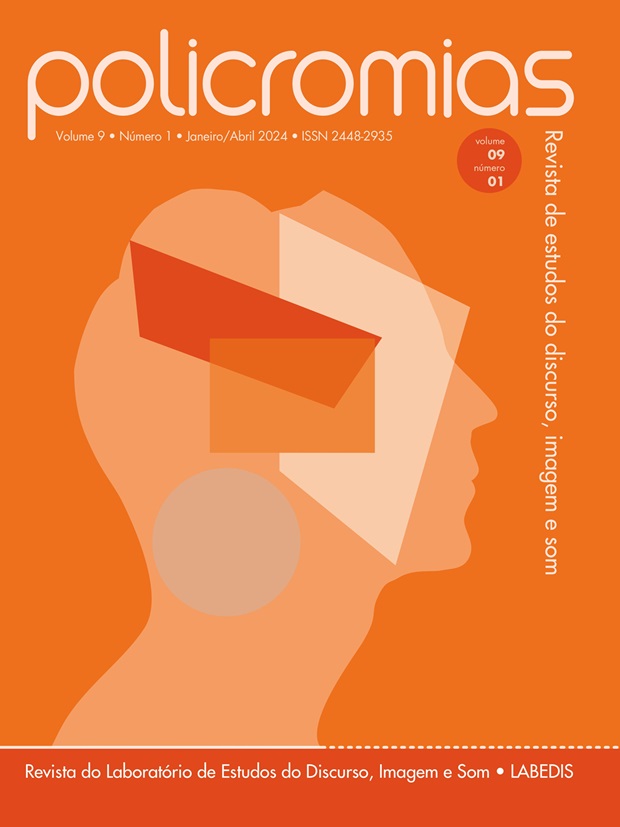DO DISCURSO SOBRE A CULTURA E A MORTE
UMA ANÁLISE DA TRILHA MUSICAL DE VIVA, A VIDA É UMA FESTA NA CONDIÇÃO DE DISPOSITIVO DISCURSIVO
DOI:
https://doi.org/10.61358/policromias.2024.v9n1.62577Resumo
Em meio aos discursos que circulam na atualidade, diversos elementos da grande rede de poder que os maneja se constituem objetos de investigação acadêmica, bem como de análise social. No que diz respeito a discursos semiológicos, o meio cinematográfico de animação vem desempenhando papel preponderante não só nas possíveis condutas que os sujeitos podem assumir, mas também na manutenção de memórias e de aspectos culturais. Diante desse potencial, o presente artigo propõe uma leitura discursiva da constituição musical e imagética do filme de animação Viva, a vida é uma festa (2017), pautada nos conceitos teórico-metodológicos desenvolvidos com base nos estudos de Michel Foucault, principalmente no que o filósofo denomina dispositivo (FOUCAULT, 2019), na defesa da existência de um dispositivo musical-cinematográfico (JORDÃO, 2022), cuja configuração produz saberes a respeito da cultura mexicana veiculada no filme. Por essa produção e a partir da análise de sequências enunciativas, conforme preconiza o método arqueogenealógico foucaultiano, é possível rastrear os modos pelos quais o dispositivo atua na tríade afetos, emoções e memória, em um incessante processo de (re)construção das subjetividades memoriais e culturais a partir dos produtos fílmicos.
Downloads
Downloads
Publicado
Edição
Seção
Licença

Este trabalho está licenciado sob uma licença Creative Commons Attribution 4.0 International License. Os(as) autores(as) dos trabalhos aprovados concordam em ceder à Policromias os direitos não exclusivos de publicação, permanecendo livres para disponibilizar seus textos em outros meios desde que mencionada a publicação da primeira versão na revista. Autorizam, ainda, a revista a ceder seu conteúdo para reprodução em indexadores, repositórios e similares. É vedada a tradução para outro idioma sem a autorização escrita do Editor, ouvida a Comissão Editorial. A responsabilidade do conteúdo dos artigos é exclusiva dos autores.

